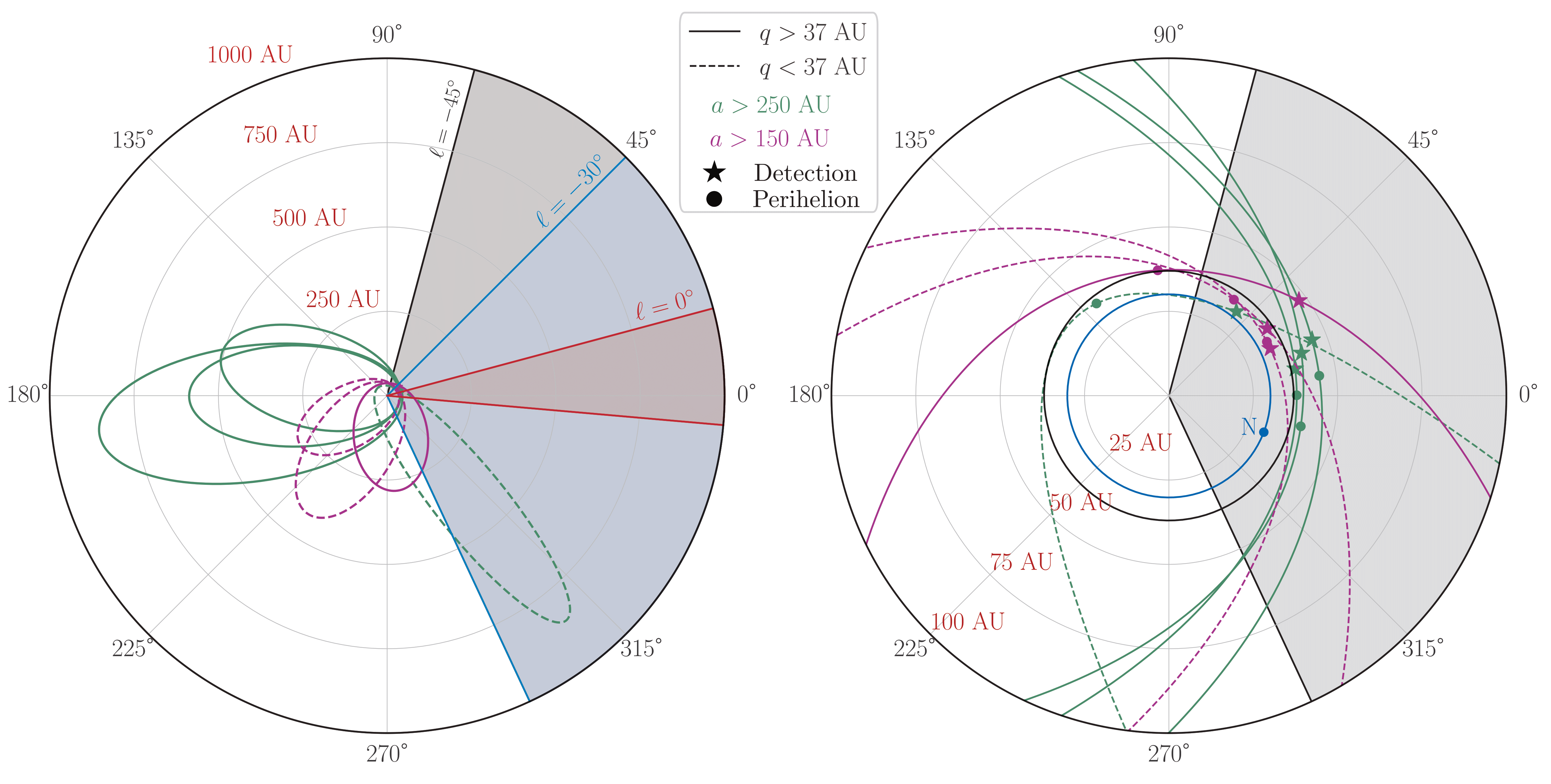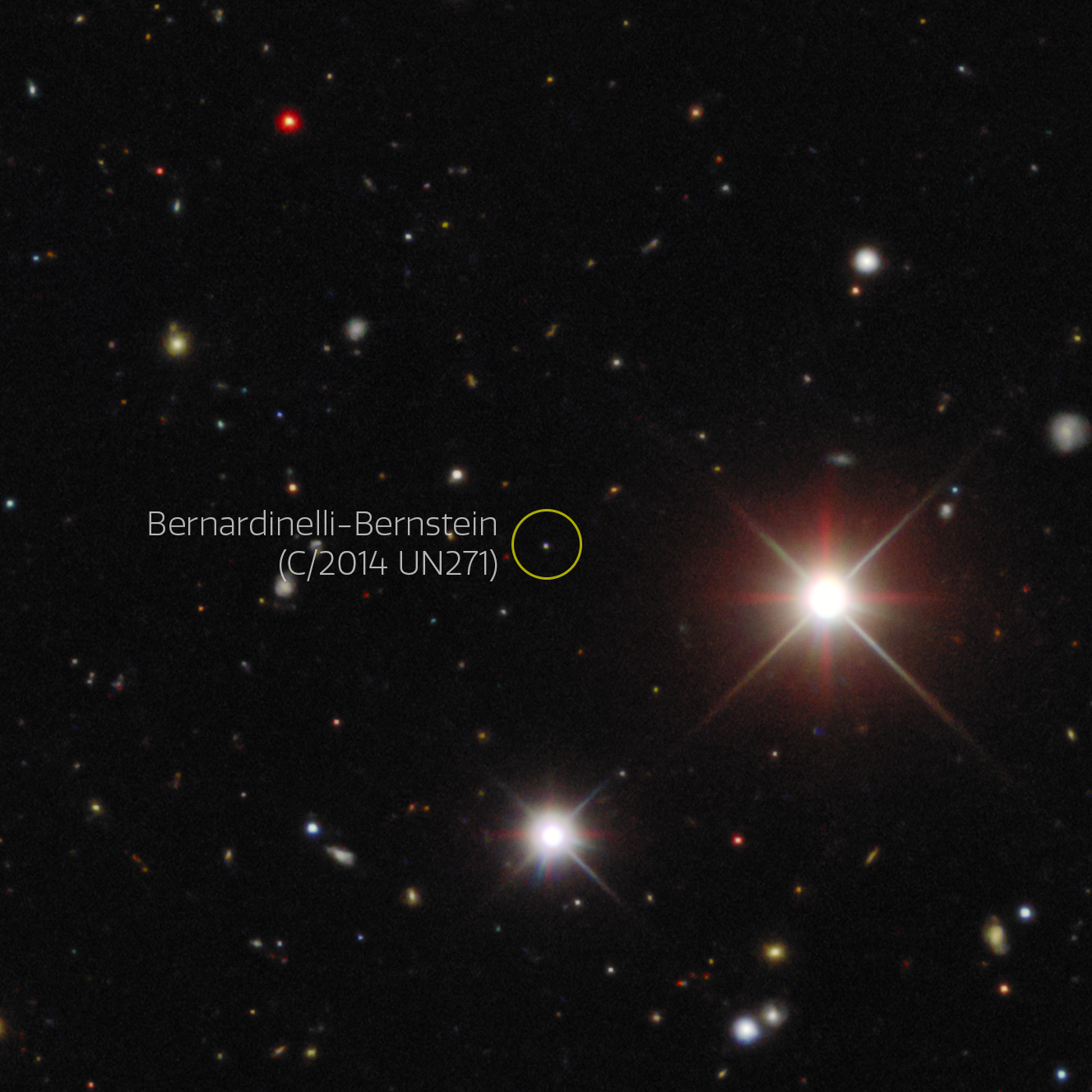My research is primarily focused on the discovery, physical/dynamical characterization, and population studies of the minor bodies in the outer Solar System in large astronomical surveys, combining modern statistical techniques, big data, and orbital dynamics. These trans-Neptunian objects (TNOs) are planetesimals whose orbital architecture and physical characteristics trace the formation history of the giant planets. Below, I am summarizing my efforts as a member of three different collaborations.
The Dark Energy Survey
I developed a series novel methodologies for identifying and characterizing trans-Neptunian objects (TNOs) in the temporally sparse data taken by the Dark Energy Survey (DES). As DES is not a Solar System survey, this process was very challenging, requiring significant computation time (approaching 20 million CPU-hours) for the search over the full dataset. The pipeline is presented in Bernardinelli et al 2020 – ApJS, 247, 32, and the final results in Bernardinelli et al 2022 – ApJS, 258, 41. This led to a catalog of 814 outer Solar System objects in this dataset. The DES surveys also enabled the estimates of color and lightcurve amplitudes for all of these objects, producing the largest contemporaneous catalog of such properties. The full catalog of orbits and photometric measurements can be found here. This process, as well as analysis of the lightcurve distribution of TNOs, is described in detail in Bernardinelli et al 2023 – ApJS, 269, 18.

With this data, I also examined our extreme trans-Neptunian objects, those with semi-major axes larger than 150 AU and perihelia larger than 30 AU. This particular type of object is interesting because they seem aligned, leading to the recent formulation of the Planet 9 hypothesis, a postulated giant planet very far from the Sun. Our analysis showed no statistically significant clustering, meaning that our objects can be explained without the need for an additional planet in the solar system. This analysis is presented in Bernardinelli et al 2020 – PSJ, 1, 28.

As a part of this search, we have found something quite unexpected, but fascinating: the comet C/2014 UN271 (Bernardinelli-Bernstein). This object is fascinating by a number of reasons: it’s a comet discovered at almost 30 au and, given how far it was in the first few DES images of it, it didn’t show noticeable activity. It’s also quite large for a comet, with a diameter estimated at about 150 km, making it the largest Oort cloud comet ever found! We have conducted a detailed study of its orbit, past dynamics and activity in a combination of DES and a few other survey images of it from 2010 to 2020, presented in detail at Bernardinelli, Bernstein et al 2021 – ApJL, 921, L37.

I am also one of the conveners of the DES transients and moving objects (TMO) group, the working group responsible, among other things, for Solar System studies in DES.
The DECam Ecliptic Exploration Project
The DECam Ecliptic Exploration Project (DEEP) survey is a project dedicated to finding small TNOs in the ecliptic plane. With a specialized strategy of observing a given field continuously for a period of four hours, DEEP enables the discovery of much fainter objects than most surveys. While surveys like DES find Kuiper belt objects of about 100 km in diameter, DEEP can find such objects with a diameter of 40 km. By finding objects with these smaller sizes, we are able to probe a different regime of the size-frequency-distribution of TNOs, delving into the planetesimal formation mechanism.
Our first analysis of the multi-year DEEP data led to the discovery of 110 objects in the B1 fields, one of the four DEEP patches. The characterization of the DEEP object discovery is presented in Bernardinelli et al 2024 – AJ, 167, 134, and the discoveries in Smotherman, Bernardinelli et al 2024 – AJ, 167, 136.

The Legacy Survey of Space and Time
The Vera Rubin’s Legacy Survey of Space and Time (LSST) is an upcoming survey that will present a once in a generation leap in Solar System science. One of the survey’s primary goals is to conduct an inventory of the small body populations of our Solar System. As part of the LSST commissioning team, I helped develop the LSST Data Preview 0.3, the first Solar System data release, a full-scale simulated catalog of objects that represents realistic expectations of what LSST is expected to discover during its 10 years of operations. I am also the current chair of the LSST Outer Solar System working group.